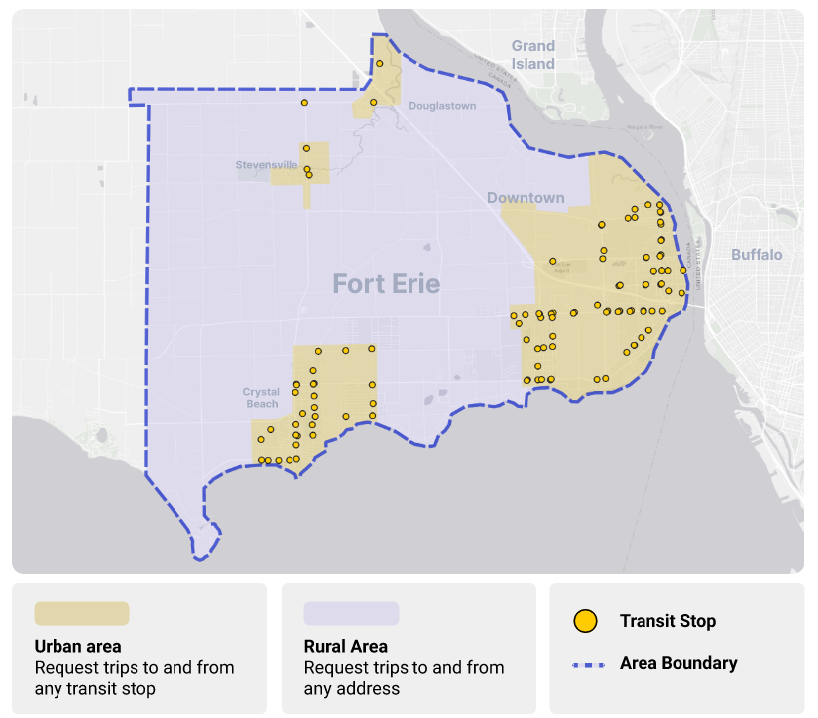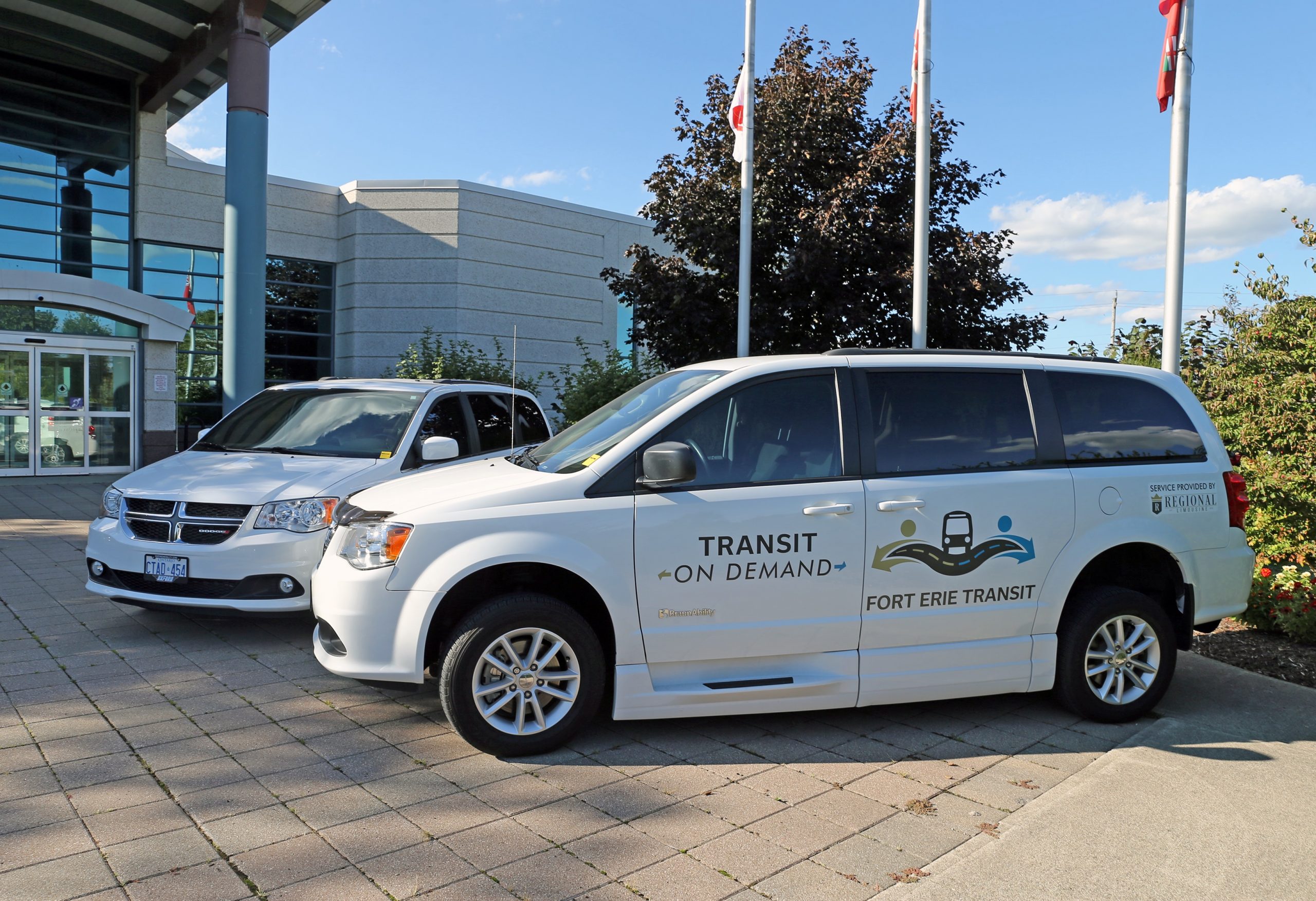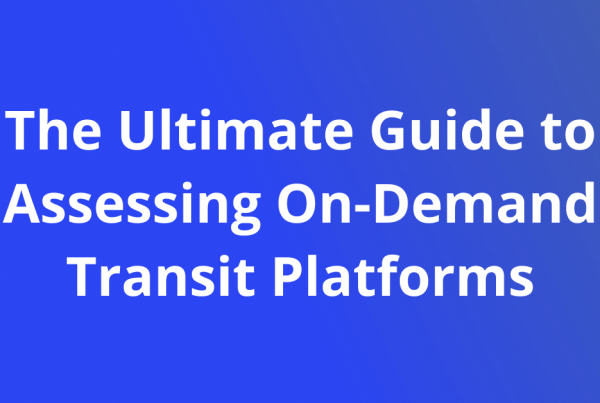Providing public transit to large areas with mixed density is one of the most challenging problems faced by the industry. Unlike dense urban areas, demand for transit in most rural and smaller towns is dispersed and irregular. When riders are spread out it becomes costly to provide everyone a regular fixed route that is convenient. This is exactly the challenge that caused Fort Erie Transit to decide to try something new, on-demand transit by Pantonium.

The new on-demand transit system
Fort Erie, Canada
Fort Erie, Ontario is a town of 30,000 people situated across the Niagara River from Buffalo, New York. It covers an area of approximately 170 square kilometers with several urban areas separated by rural districts. In 2021, Fort Erie Transit, like most transit agencies around the world, was struggling to provide sustainable and effective transportation for its residents. Their service was limited to 4 fixed routes covering bus stops mostly in the urban areas. Large parts of the town were not accessible to public transit and riders who did have access had very little flexibility where or when they could travel. In order to provide transit service to a large area without spending more than they could afford; the town chose to innovate and embrace a new way of providing transportation services.
Pantonium, in partnership with a local transportation company, Regional Limousine, worked with Fort Erie to develop and deploy a new on-demand transit system that would sustainably provide transit access to the entire town with a service that was faster and more convenient than the existing fixed route system.
Solution:
Pantonium’s Macrotransit software allowed Fort Erie Transit to quickly deploy an on-demand service that used existing bus stops in areas that were originally covered by fixed routes, and an address or point-of-interest based system in the areas that were not covered by fixed routes. This allowed riders to order rapid on-demand service no matter where they live. Riders could call, use a website or mobile applications to pre-book or instantly order transit and receive notifications on the status of their trips.
The new on-demand transit system is now covering a larger service area, carrying more riders, and has quick and convenient wait and ride times. All while eliminating the need to transfer between buses or walk long distances to bus stops.
The number of riders serviced per day since the service launched is up >70%, from 70 riders on weekdays in the month of October 2021 to over 120 riders on weekdays in January 2022. It has also easily surpassed past fixed route ridership with average daily ridership up nearly 50% in January 2022 compared to August 2021, despite the colder weather and increased COVID-19 restrictions.
Results:
- Full coverage of 170 km2 through transit stops, points of interest and door-to-door zones
- Increase in ridership: 46% increase compared to past fixed route service (Jan 2022 vs Aug 2021)
- Short wait times of 7 minutes compared to 1 hour headways on past fixed route service
- Short ride times of 14 minutes compared to 1 hour trip times on past fixed route service not including need to transfer
This successful deployment to a large service area has made transit more accessible for riders, many of whom never had any access to transit before, due to the limited coverage of the old fixed route system. However, the new system is both faster and more reliable than what was possible with fixed routes. Even though it is carrying more riders than ever, wait and ride times are now substantially lower. The experience of Ft. Erie Transit shows that a small amount of new technology can enable a positive transformative change for transit operations and rider experience.




